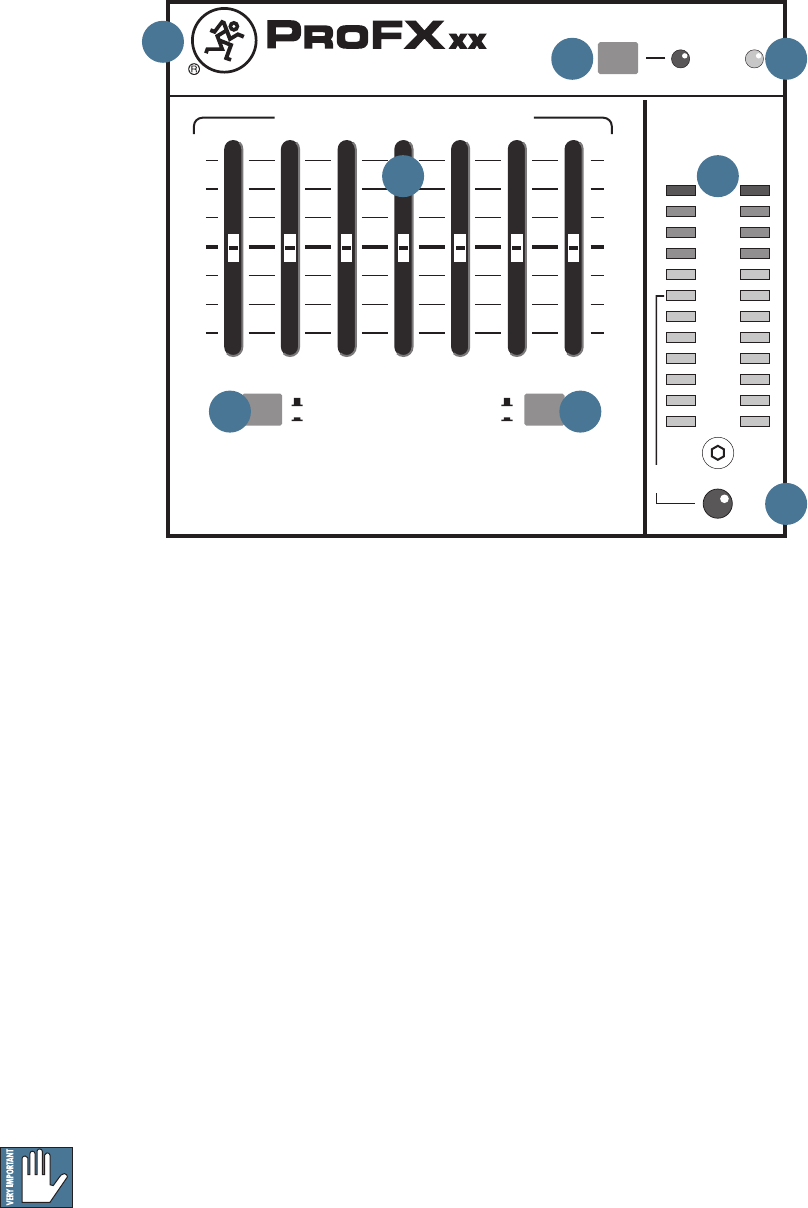
20 ProFX16 and ProFX22
Stereo Graphic EQ, Main
Meters & more!
35. 48V PHANTOM POWER Switch
Mostmodernprofessionalcondensermicsrequire
48Vphantompower,whichletsthemixersendlow-
current DC voltage to the mic’s electronics through the
same wires that carry audio. (Semi-pro condenser mics
often have batteries to accomplish the same thing.)
“Phantom” owes its name to an ability to be “unseen”
bydynamicmics(ShureSM57/SM58,forinstance),
which don’t need external power and aren’t affected by
it anyway.
Press this switch in if your microphone requires
phantom power. (Always check the position of this
switch before connecting microphones.) A red LED just
to the right of the switch will illuminate to indicate that
phantom power is active. This is a global switch that
affects all mic channels' XLR jacks at once.
Never plug single-ended (unbalanced)
micro phones, or ribbon mics into the mic
input jacks if phantom power is on. Do not
plug instrument outputs into the mic XLR input jacks
with phantom power on, unless you know for certain
it is safe to do so. Be sure the main mix fader [56] is
turned down when connecting microphones to the mic
inputs when phantom power is turned on, to prevent
pops from getting through to the speakers.
36. POWER LED
This green LED will illuminate when the mixer is
turned on, as a reminder of how on it really is. If it is
not on, then it is off, and the mixer becomes a rather
nice weight for keeping your morning newspaper from
blowing away in the wind.
If it does not turn on, make sure the power cord is
correctly inserted at both ends, the local AC mains
supply is active, and the power switch [2] is on.
37. STEREO GRAPHIC EQ
This 7-band graphic equalizer adjusts the main mix
output. It affects the line-level outputs [30, 31], but
not the headphones [33], tape outputs [34], or the
USB output [3]. This EQ may be used for a monitor mix
instead of the main mix if the main mix/mon 1 switch
[38] is engaged. It may also be quickly bypassed using
the EQ in/bypass switch [39].
Each slider allows you to adjust the level of its
frequency band, with up to 15 dB of boost or cut,
and no change in level at the center (0 dB) position.
The frequency bands are: 125, 250, 500, 1 k, 2 k, 4 k
and 8 kHz.
The EQ section comes before the main mix fader [56]
and meters [40]. As with the channel EQ, just take it
easy. There is a large amount of adjustment, and if you
are not careful, you can upset the delicate balance of
nature. Although it may not seem cool to actually turn
down controls, with EQ it is often your best option. Turn
down the offending frequency range rather than
boosting the desired range. You may use it to reduce the
level of some frequency bands where feedback occurs.
48V
OL
4
6
3
10
15
7
10
20
30
0
2
0dB = 0dBu
LEVEL
SET
RUDE
SOLO
MAIN
METERS
RL
PHANTOM POWER
8K4K2K1K500250125
15
15
10
10
5
5
0
15
15
10
10
5
5
0
STEREO GRAPHIC EQ
PROFESSIONAL MIC/LINE MIXER WITH FX
MAIN MIX
MON 1
EQ IN
BYPASS
36
41
4037
38 39
35
4


















